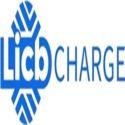Introduction
As a leading EV charger manufacturer in China, LiCB Charge offers reliable AC and DC electric vehicle charging stations along with comprehensive charging solutions.
The global push for cleaner, more sustainable transportation is reshaping the way we think about mobility. At the heart of this transformation is eMobility charging, a rapidly growing sector driven by the increasing adoption of electric vehicles (EVs). As EVs become a more prominent part of urban and suburban landscapes, the demand for reliable, accessible, and scalable charging infrastructure is rising. eMobility charging refers to the comprehensive ecosystem that supports EVs in recharging their batteries, ranging from simple home charging units to advanced public fast-charging networks.
For businesses, governments, and consumers, understanding how eMobility charging works and its significance is vital. Beyond marking a crucial step in the evolution of transportation, it offers opportunities for innovation, investment, and environmental impact reduction.
EV Charger
What Is eMobility Charging?
eMobility charging involves all systems, technologies, and services that support the charging of electric vehicles. Key components include:
-
Home charging solutions such as wall-mounted AC chargers.
-
Public and commercial chargers installed in places like shopping malls, offices, parking garages, and along highways.
-
Fast-charging stations, including DC fast chargers capable of rapidly recharging an EV battery in under an hour.
-
Software platforms that manage, monitor, and optimize energy delivery.
At its core, eMobility charging bridges the gap between EVs and the electric grid, ensuring that drivers have access to the power they need, when and where they need it.
The Role of eMobility Service Providers (eMSPs)
eMobility Service Providers (eMSPs) are key to simplifying the charging experience. They make it easier for EV drivers to access charging services by eliminating the need for multiple memberships or incompatible systems.
How eMSPs Work
An eMSP typically offers:
-
Subscription-based or pay-as-you-go charging access.
-
Mobile apps to locate nearby charging stations, monitor charging sessions, and process payments.
-
Roaming agreements, enabling users to access a broad network of chargers with a single account.
This seamless connectivity is crucial to encourage EV adoption. Imagine needing a different membership at every gas station—eMSPs prevent that headache in the EV world.
Types of EV Charging
Understanding the various types of EV charging is essential for both consumers and businesses entering the eMobility space.
-
Level 1 Charging (Slow Charging)
-
Power Source: Standard 120V outlet
-
Charging Speed: 3–5 miles of range per hour
-
Use Case: Ideal for overnight charging at home
-
Pros: No additional installation required
-
Cons: Slow, often insufficient for daily driving
-
-
Level 2 Charging (Fast Home/Commercial Charging)
-
Power Source: 240V outlet
-
Charging Speed: 10–60 miles of range per hour
-
Use Case: Home, workplaces, commercial properties
-
Pros: Faster, suitable for daily use
-
Cons: Requires dedicated equipment and professional installation
-
-
DC Fast Charging (Rapid Charging)
-
Power Source: Direct current from a high-capacity station
-
Charging Speed: 60–250 miles of range per 20–30 minutes
-
Use Case: Highways, transit hubs, public networks
-
Pros: Fast turnaround
-
Cons: Expensive equipment, not compatible with all vehicles
-
Each type of charging serves a unique role within the EV ecosystem, ensuring drivers can always access the power they need, whether at home, at work, or while on the road.
Key Components of a Charging Ecosystem
A robust eMobility infrastructure relies on several interconnected elements:
Charging Hardware
-
AC Chargers: Ideal for residential or workplace use.
-
DC Chargers: Necessary for high-speed, public applications.
-
Portable Chargers: Useful for emergency or mobile charging.
-
Smart Chargers: Equipped with IoT capabilities for energy monitoring and optimization.
Charging Management Software
These platforms enable:
-
Monitoring energy consumption.
-
Optimizing load distribution.
-
Dynamic pricing.
-
Providing real-time analytics to users and operators.
Connectivity & Communication Protocols
Protocols like OCPP (Open Charge Point Protocol) and OCPI (Open Charge Point Interface) ensure seamless communication between hardware, software, and backend systems, fostering interoperability among different manufacturers and service providers.
The Business of eMobility Charging
For companies, investing in EV charging infrastructure presents both immediate and long-term benefits, such as improved sustainability credentials and the ability to attract environmentally conscious customers.
Opportunities for Business
-
Retail & Hospitality: Enhance customer loyalty with on-site chargers.
-
Real Estate: Increase property value by offering EV charging.
-
Fleet Management: Electrify logistics and delivery fleets with managed charging hubs.
Revenue Models
-
Pay-per-use: Charging fees based on kWh or time.
-
Subscription services: Monthly flat-rate access.
-
Ad-supported models: Integrating advertising with charging stations.
eMobility Charging and Renewable Energy
Integrating EV charging with renewable energy sources such as solar and wind creates a sustainable loop, reducing fossil fuel reliance and lowering carbon emissions. Smart charging systems can even optimize charging times based on grid conditions, while vehicle-to-grid (V2G) technologies allow EVs to feed energy back into the grid during peak demand periods.
This synergy supports broader climate goals and enhances energy independence.
Challenges in eMobility Charging
Despite the rapid progress, several challenges persist:
-
Grid Load and Infrastructure: Increased EV adoption strains the power grid. Solutions like smart grids and strategic station placements are needed.
-
Standardization: Competing charging connectors (CCS, CHAdeMO, Tesla) create compatibility issues.
-
Accessibility and Coverage: EV infrastructure is still limited in some regions, particularly rural and low-income areas.
-
Cost and Investment: Installing and maintaining charging stations can be expensive. Government incentives and public-private partnerships are vital.
Government Policies and Incentives
Governments worldwide are incentivizing EV infrastructure through:
-
Tax credits and rebates for charger installation.
-
Grants for commercial and public charging stations.
-
Regulations requiring new buildings to be EV-ready.
-
Subsidies for electric vehicle purchases.
These policies aim to lower costs, encourage adoption, and foster innovation in the eMobility space.
The Role of Smart Charging
Smart charging refers to systems that intelligently manage when and how EVs are charged, offering advantages such as:
-
Charging during off-peak hours.
-
Communication with the electric grid.
-
Integration with renewable energy.
-
Load management for multi-vehicle facilities.
Smart charging minimizes operational costs, prevents grid overloads, and enhances user convenience—making it a critical component of future-proof EV infrastructure.
The Future of eMobility Charging
In the coming decade, we can expect significant advancements in eMobility. Trends shaping the future include:
-
Ultra-fast charging: Chargers delivering over 300 kW.
-
Wireless charging: Inductive charging embedded in roads or parking spaces.
-
Battery swapping: A potential alternative to traditional charging in certain markets.
-
AI-powered networks: Using predictive analytics to optimize charging station placement and energy use.
These innovations will make EVs more practical and appealing to a broader audience.
Conclusion
eMobility charging is not just about powering vehicles; it is a dynamic, interconnected ecosystem that supports the transition to sustainable transportation. From cutting-edge hardware and smart software to seamless services offered by eMobility Service Providers, each element plays a crucial role.
As EV adoption continues to grow worldwide, the demand for reliable, scalable, and intelligent charging infrastructure intensifies. Whether you're a business owner, policymaker, or consumer, now is the time to engage with eMobility.
By investing in future-ready charging infrastructure today, we lay the groundwork for a cleaner, greener tomorrow.Know more about Google SEO Directory



